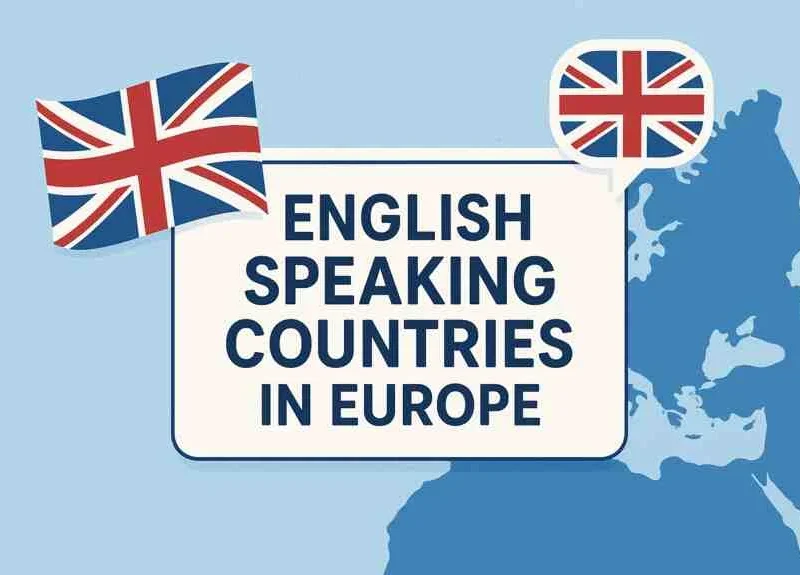So, you’ve been hearing the word “data scientist” everywhere now. On the internet, job boards, LinkedIn, tech blogs — it’s like everyone wants one, or wants to become one. But what even is a data scientist, and how do people actually get into that field? Especially in Europe, where job markets, languages, and education systems can be all over the place; what’s the surest way?
It’s not always straightforward, and honestly, it can feel overwhelming at first. You see companies throwing out words like “machine learning,” “AI,” “big data,” and it’s easy to assume you need some PhD or insane math genius brain to even try. But the truth? Becoming a data scientist in Europe is much more accessible than most people think. You don’t need to have it all figured out from day one. If you’re a curious person who enjoys solving problems, and you don’t mind learning a few technical skills, you’re already halfway there.
This guide isn’t just another textbook you might have been reading. I will be keeping it real here and covering the basics, showing you the skills that actually matter, and walking through the steps that work. Are you just starting newly, or moving from another career, or just exploring your options? We’ll be breaking it all down in a way that is easy for you to become a data scientist in Europe.
An Overview of Data Scientist Jobs in Europe
Let’s talk about the job scene in Europe first. Right now, data science roles are growing like crazy across the continent. Companies are sitting on huge piles of data. Be it sales numbers, customer behavior, website traffic, you name it. But without people to make sense of it all, that data doesn’t do much. That’s where data scientists come in.
In Europe, the demand is everywhere. Cities like London, Berlin, Amsterdam, and Stockholm have become hotspots for data jobs. Even places you might not expect like Warsaw, Lisbon, or Vienna are seeing a rise in tech roles, including data science.
The industries hiring data scientists? It’s a long list. Finance, e-commerce, healthcare, transportation, logistics, government — you name it. Basically, if a business deals with data (and most do these days), there’s a need for someone who can turn that data into something useful.
One cool thing is that the job titles can vary. Some companies look for “Data Analysts” or “Machine Learning Engineers,” while others post openings for “AI Specialists” or “Data Engineers.” But at the core, these roles often overlap. They all involve understanding data, building tools or models, and making decisions based on real evidence, not just gut feeling.
Salaries, of course, are different across countries. A junior data scientist in Germany might earn around €45,000 – €55,000 annually, while someone in Switzerland or Denmark could be looking at €70,000 or more. London tends to pay well too, though the cost of living is higher. Even entry-level roles can offer solid pay if you have the right skills.
Skills Needed for Data Scientist Jobs
Now let’s get into what you actually need to know. What are the tools and skills employers in Europe are looking for?
- Mathematical Skills: First off, some basic math and statistics knowledge is key. Don’t worry—you don’t need to be a math wizard. But understanding things like averages, standard deviation, probability, regression, and correlation helps you make sense of what the data is actually telling you. It’s not just about crunching numbers—it’s about understanding what those numbers mean.
- Programming: Then there’s programming. This part scares some people off, but it’s more learnable than it seems. Python is usually the go-to language in data science. It’s beginner-friendly and has libraries that make life a lot easier — pandas, NumPy, scikit-learn, and Matplotlib are just a few. R is also used, especially in academic settings, but Python is more versatile for most jobs. SQL is another big one. It helps you pull data out of databases, which is something you’ll do a lot.
- Visualisation: Next up, data wrangling and visualization. In plain terms, you need to be good at cleaning messy data (and trust me, real-world data is always messy) and turning it into something people can understand. Tools like Tableau, Power BI, or even Excel still get used a lot. Being able to communicate your findings with a simple chart or graph is underrated but super valuable.
- Machine Learning: Machine learning is also part of the picture, especially if you’re aiming for more advanced roles. Things like decision trees, logistic regression, and clustering models are often used. But don’t stress if you don’t know it all right away. You can start small and build up over time.
And finally, soft skills. Seriously, these matter. Communication, curiosity, problem-solving, storytelling. All of these help you explain your work and make your results useful. You can build the best model in the world, but if no one understands it, it’s not going to matter.
Step-by-Step on How to Become a Data Scientist in Europe
So how do you actually go from where you are now to landing a data scientist job in Europe? Let’s break it down into steps.
Step 1: Learn the Basics
Start by learning the foundations of statistics, math, and programming. There are tons of free resources online—YouTube, Coursera, edX, and even blogs. Python is usually the best place to start. Don’t stress if it feels hard at first. Just keep going bit by bit.
Step 2: Get Comfortable with Data
Try out some small projects. Clean up a messy dataset, build a dashboard, or do a simple analysis. Use websites like Kaggle or DataCamp to find projects and datasets. The more you practice, the better you get.
Step 3: Build Your Skills Further
Once you’re comfortable with the basics, start learning about machine learning and real-world tools. Understand how to use scikit-learn, build regression or classification models, and evaluate results. Start adding some of these projects to your portfolio.
Step 4: Build a Portfolio
This is super important. Employers want to see what you’ve worked on. Make a GitHub profile and upload your projects there. Write a blog post explaining your process. It doesn’t have to be fancy—just show that you can think like a data scientist.
Step 5: Take a Course or Bootcamp (Optional)
If you want something structured, you can take an online course or even attend a bootcamp. Some programs are specifically tailored for the European job market. These can also help you with job placement and interviews.
Step 6: Apply for Internships or Entry-Level Jobs
You don’t have to land your dream job right away. Start with internships, apprenticeships, or junior roles. These get your foot in the door. Look for companies that support learning and growth.
Step 7: Network and Stay Active
And honestly? Network. Talk to people. Join LinkedIn groups, attend virtual meetups, post your projects online. A lot of opportunities come from just being visible.
Step 8: Keep Learning
Data science changes fast. New tools, techniques, and trends come up all the time. Be someone who stays curious and keeps learning. It makes you more valuable and keeps the job exciting.
Data Scientist Jobs in Europe
There’s no shortage of places hiring right now. London has a big fintech and healthtech scene. Berlin is full of startups and AI-focused companies. Amsterdam, with its international focus, offers roles in everything from e-commerce to logistics. Dublin is basically tech central for Europe, with companies like Google, Facebook, and Amazon hiring all the time.
You’ll also find jobs in more “traditional” sectors — like insurance, retail, even farming tech. Don’t sleep on countries like Poland, Portugal, or Hungary either. They’re growing fast, and many companies there hire international workers.
Language might come up, especially in countries like France or Germany. However for most tech roles, English is enough. And more companies are open to remote workers now than ever before.
Conclusion
So, is becoming a data scientist in Europe easy? Not exactly. But is it possible even if you’re starting from zero? Absolutely.
It’s a journey, for sure. You’ll hit moments where nothing makes sense and everything feels confusing. But then, piece by piece, it starts to click. And once you land that first job, the path gets clearer. You just have to start, keep learning, and not get discouraged.
The demand is there. The tools are available. The opportunities are real. Whether you want to work in a big city or remotely from anywhere in Europe, data science can open doors you probably haven’t even thought about yet.
You don’t need to be perfect; you just need to start somewhere.






